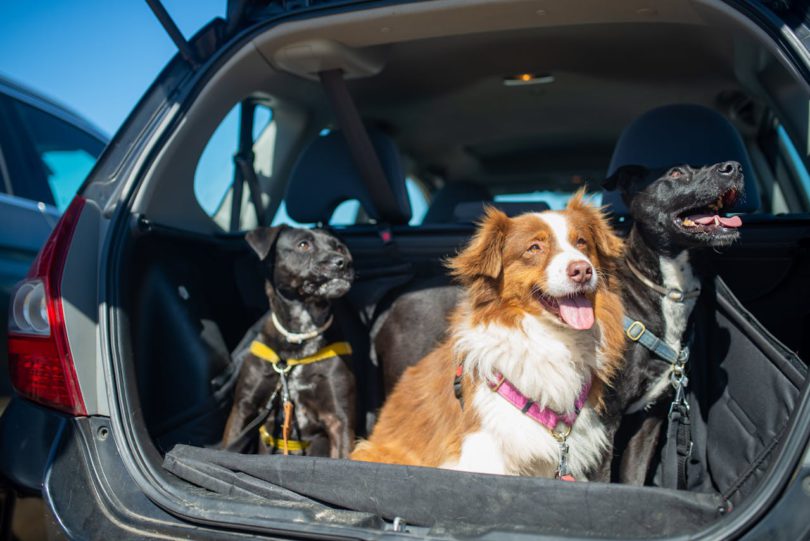Traveling with pets can be one of life’s greatest joys—but also one of its biggest challenges. Our furry, feathered, or even scaly companions are beloved family members, and leaving them behind isn’t always an option. Whether you’re road-tripping across the country or flying to a distant destination, planning a pet-friendly vacation requires preparation, patience, and a few practical strategies. The good news? With the right approach, you can make travel enjoyable for both you and your pet.
Know Your Pet’s Personality
Not all pets handle travel the same way. Some dogs love car rides and exploring new environments, while others may experience anxiety outside of their familiar home. Cats are generally more cautious and often prefer the security of their carrier. Even small mammals, birds, and reptiles can be sensitive to temperature changes, motion, and new surroundings. Understanding your pet’s temperament helps you plan appropriately and avoid stressful situations.
Choosing Pet-Friendly Accommodations
Finding accommodations that welcome pets is crucial. Many hotels, vacation rentals, and even campgrounds now advertise pet-friendly policies, but it’s important to confirm details such as weight limits, additional fees, and rules about leaving pets unattended. Look for properties that offer nearby walking areas, enclosed yards, or on-site pet amenities. Websites like BringFido, PetsWelcome, and Airbnb’s pet-friendly filter can save time and help identify suitable lodging options.
Pack Smart
A successful pet-friendly trip starts with smart packing. Essentials include:
- Food and water: Bring enough for the entire trip, plus a little extra in case of delays.
- Feeding bowls and travel water bottles: Collapsible versions are convenient for car rides and hikes.
- Comfort items: Favorite toys, bedding, or blankets can provide reassurance in unfamiliar settings.
- Health and safety items: Include medications, a first-aid kit, and up-to-date vaccination records.
- ID and travel documents: A collar with ID tags, microchip information, and copies of veterinary records are essential, especially for flights or border crossings.
Packing these items ensures your pet feels secure and helps you avoid last-minute stress.
Prepare for the Journey
If traveling by car, make the ride comfortable and safe. Use a secured crate or a pet seatbelt harness to prevent injuries and limit distractions while driving. Stop every few hours for bathroom breaks, water, and a chance to stretch. Bring familiar items like a blanket or toy to reduce anxiety, and never leave pets alone in hot cars—a risk that can quickly become life-threatening.
Flying with pets requires extra planning. Check airline policies for size restrictions, carrier requirements, and pet fees. Whenever possible, book direct flights to reduce travel time, and avoid peak summer months when heat can be dangerous in cargo holds. Consulting your veterinarian before air travel is recommended to ensure your pet is healthy and up-to-date on vaccines.
Explore Pet-Friendly Activities
A vacation is about enjoyment, and pets should be able to share in the fun. Research dog-friendly beaches, parks, and hiking trails. Many cities now offer pet-friendly restaurants, cafes, and attractions. For indoor pets, consider bringing enrichment activities like puzzle feeders, portable cages, or travel-friendly playpens. Allow for downtime so your pet isn’t overstimulated, especially in busy tourist areas.
Maintain Routine Where Possible
Pets thrive on routine, and travel can disrupt their normal feeding, walking, and sleeping schedules. Try to keep meal times and exercise consistent, even if the surroundings change. This reduces stress and helps pets adjust more easily to new environments.
Safety and Health Considerations
Traveling exposes pets to new environments, animals, and climates. Protect them with flea and tick prevention, ensure they are up-to-date on vaccinations, and research any regional risks such as wildlife hazards or local diseases. Carry a portable first-aid kit and know the location of nearby veterinary clinics at your destination. For exotic pets, temperature and humidity control may be critical to their wellbeing.
Tips for Stress-Free Travel
- Practice before the trip: Take short drives or overnight stays to help your pet get used to traveling.
- Use calming aids: Anxiety vests, pheromone sprays, or mild veterinarian-approved supplements can reduce stress.
- Stay flexible: Allow extra time for bathroom breaks, slow walks, or unexpected naps.
- Plan for emergencies: Keep a list of emergency contacts, local vets, and pet-friendly shelters.
- Respect local rules: Leash laws, pet restrictions, and public etiquette keep both your pet and others safe.
Making Memories Together
Traveling with your pet strengthens your bond, provides new experiences, and creates memories you’ll cherish forever. With careful planning, attention to your pet’s needs, and a focus on safety, your vacation can be both enjoyable and stress-free. Whether you’re hiking in the mountains, lounging on a beach, or exploring a bustling city, bringing your pet along turns a regular trip into a shared adventure—full of tail wags, curious sniffs, and happy moments.

